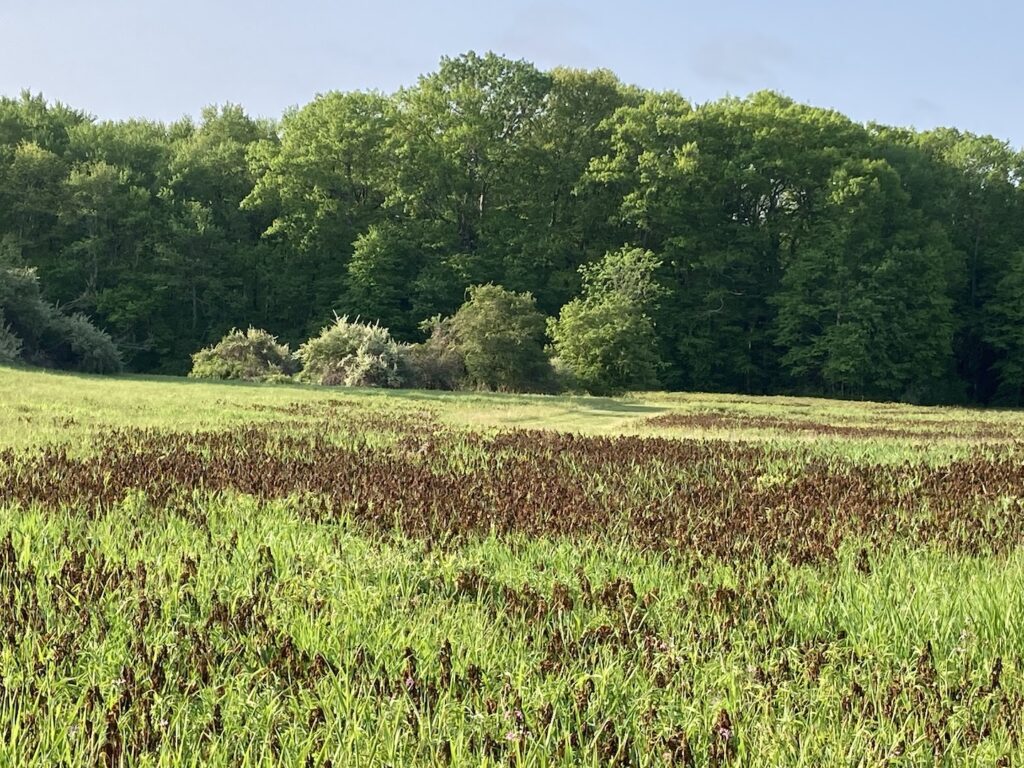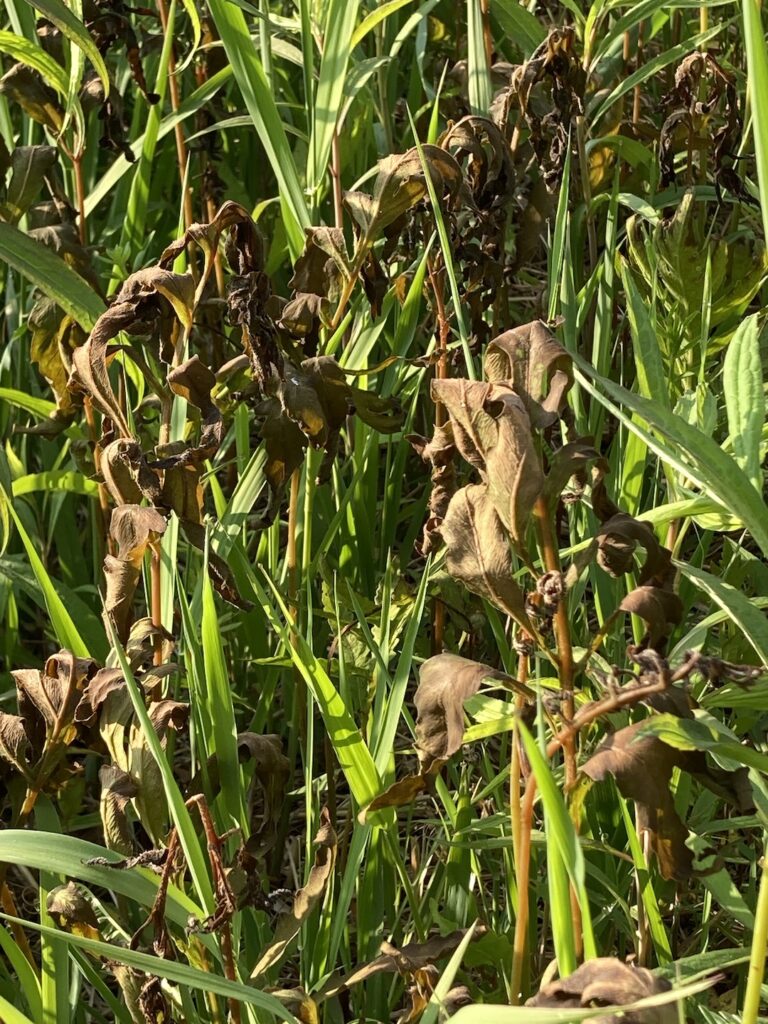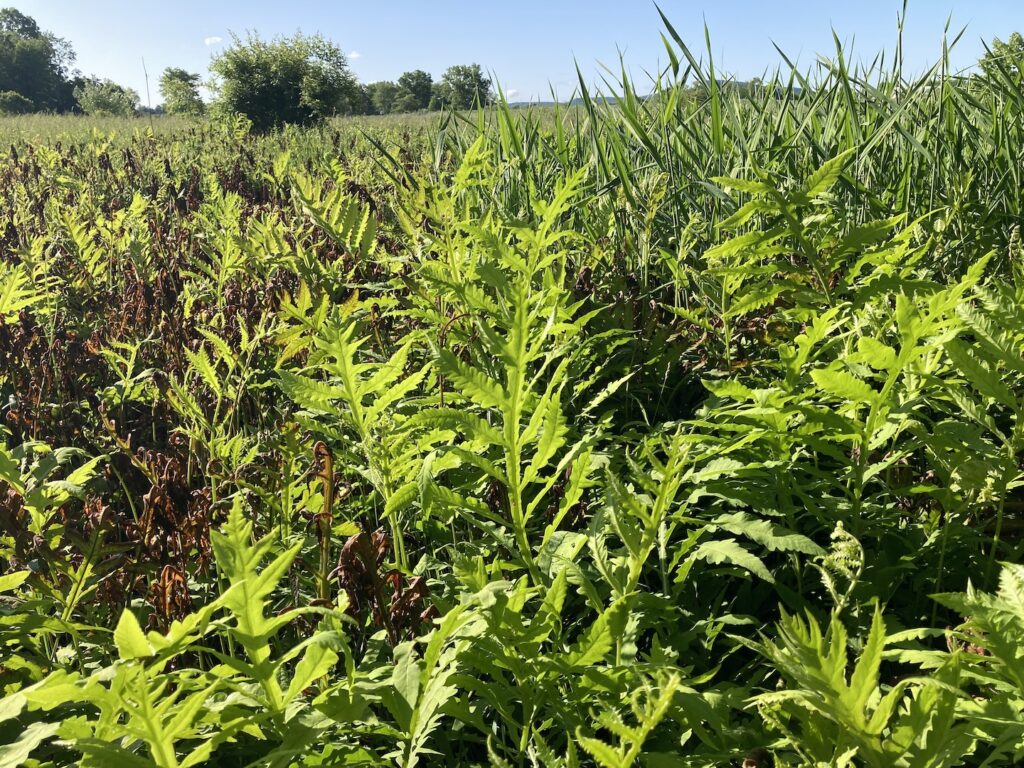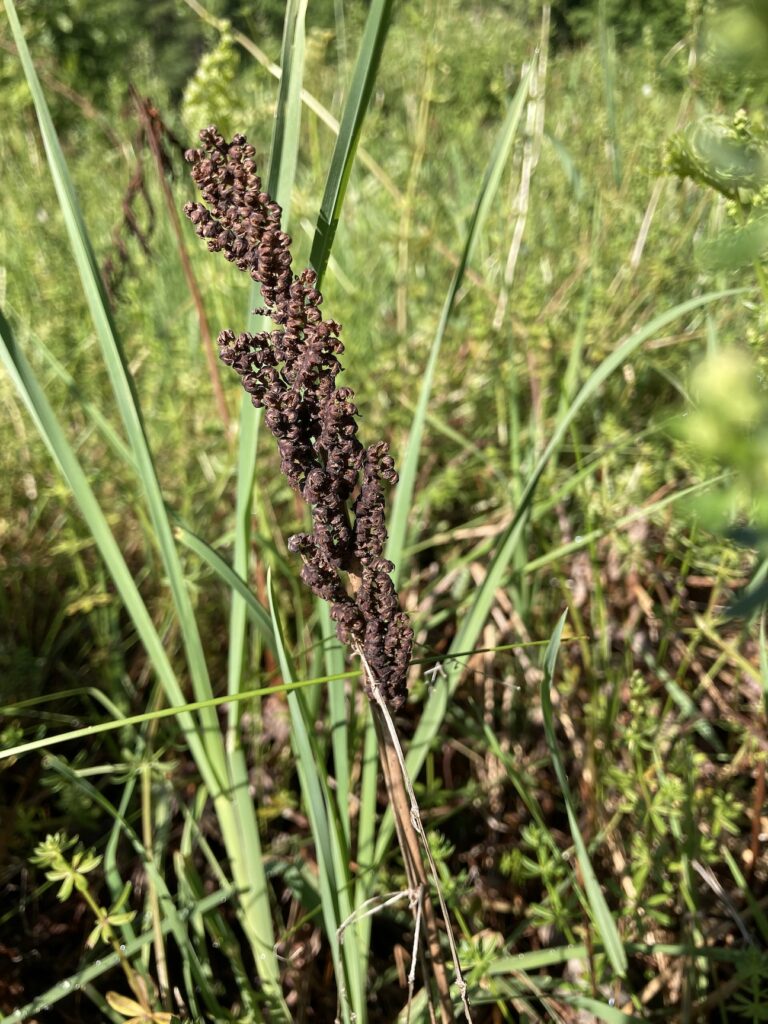Almanac: Sensitive

View of a field north of the UMass campus on the morning after the recent late-season frost showing a large patch of dead vegetation that is the subject of this week’s column. Photo: Stephen Braun
Most of the trees and plants in the valley seem to have shrugged off the late-season frost that occurred on May 18th. But one species was hard-hit, and its name says it all: sensitive ferns (aka, Onoclea sensibilis). On a walk the morning of the frost I saw many large patches of dead sensitive ferns, leaves curled and dark as though hit with a blow torch.

Most plants in our area have adapted some mechanisms to protect themselves from extreme cold, such as the creation of antifreeze proteins, dehydration of cells to prevent ice formation, or changes in the fat content of cell membranes. At a cellular level, freezing temperatures can cause ice to form within and around cells, which can cause the cells to burst and die. The leaves of sensitive ferns are quite thin and tender, which means they are vulnerable not only to late-spring frosts, but also to early-fall frosts.
That sensitive ferns are extremely common here and elsewhere in frosty New England suggests, however, that their sensitivity to cold is not the liability it might at first appear. In fact, this species has survived practically unchanged for at least 57 million years, which is the age of fossils that look practically identical to today’s sensitive ferns. So this species may look dainty and fragile, but it’s actually incredibly tough, successful, and aggressive.
Evidence of this fern’s resilience was on display just the other day when I was walking along a field in South Amherst and observed many new, bright green sensitive fern fronds rising amid the wreckage of the previous week’s frost.

Although the leaves of sensitive ferns are, obviously, sensitive, the fibrous rhizomes from which the fronds emerge are quite frost resistant, even though they are usually only an inch or so under the soil surface. In addition, the spore-containing fronds, which, unlike most other ferns, are completely different structures than the chlorophyll-containing “sterile fronds,” are quite hardy and can remain upright for several years. These fertile fronds contain small, bead-like structures, which accounts for the other common name of this plant: bead fern.

Sensitive ferns prefer wet, shaded environments like swamps, thickets, and woodland edges, but they can also tolerate sunnier locations and a wide range of soil types. In fact, sensitive ferns in my back yard are aggressive and I am continually yanking them out of flower beds and other places where I don’t want them. (The temperature in my back yard did not dip as low as in outlying fields last week, because my ferns were unscathed.)
As a friend of mine pointed out recently, a more apt—and poetic—name for sensitive ferns would be “Phoenix ferns.” That certainly gets my vote, but, alas, the window for inventing common names for plants shut quite some time ago!
Almanac is a regular Indy column of observations, musings, and occasional harangues related to the woods, waters, mountains, and skies of the Pioneer Valley. Please feel free to comment on posts and add your own experiences or observations.

It’s all about … greedy genes at work…. 😉
I’m glad to know more about these ferns, because I often contemplate how the “sensitive” ferns are among the least delicate-looking ferns around my house.
Sensitive != Delicate